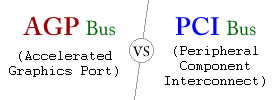Difference between DSP Processor and Microcontroller
Key difference: DSP stands for digital signal processing. It is basically any signal processing that is done on a digital signal or information signal. A DSP processor is a specialized microprocessor that has an architecture optimized for the operational needs of digital signal processing. A microcontroller, on the other hand, is a small computer on a single integrated circuit containing a processor core, memory, and programmable input/output peripherals. The microcontroller often also includes program memory, as well as, a small amount of RAM.
 Microcontrollers and DSP processors are two types of microprocessors. They are programmed to perform a particular application or task as given by the user. They both operate by manipulating the binary data on the device. However, both are quite different in nature.
Microcontrollers and DSP processors are two types of microprocessors. They are programmed to perform a particular application or task as given by the user. They both operate by manipulating the binary data on the device. However, both are quite different in nature.
DSP stands for digital signal processing. It is basically any signal processing that is done on a digital signal or information signal. DSP aims to modify or improve the signal. It is characterized by the representation of discrete units, such as discrete time, discrete frequency, or discrete domain signals. DSP includes subfields like communication signals processing, radar signal processing, sensor array processing, digital image processing, etc.
A DSP processor is a specialized microprocessor that has an architecture optimized for the operational needs of digital signal processing. The main goal of a DSP processor is to measure, filter and/or compress digital or analog signals. It does this by converting the signal from a real-world analog signal to a digital form. In order to convert the signal it uses a digital-to-analog converter (DAC). However, the required output signal is often another real-world analog signal. This is turn also requires a digital-to-analog converter.
Digital signal processing algorithms run on various platforms, such as general purpose microprocessors and standard computers; specialized processors called digital signal processors (DSPs); purpose-built hardware such as application-specific integrated circuit (ASICs) and field-programmable gate arrays (FPGAs); Digital Signal Controllers; and stream processing for traditional DSP or graphics processing applications, such as image, video.
Digital signal processing is more complex in nature than analog signal processing; however it is has many advantages over ASP, such as error detection, correction in transmission, and data compression.
 A microcontroller, on the other hand, is a small computer on a single integrated circuit containing a processor core, memory, and programmable input/output peripherals. The microcontroller often also includes program memory, as well as, a small amount of RAM. A microcontroller is sometimes abbreviated as µC, uC or MCU.
A microcontroller, on the other hand, is a small computer on a single integrated circuit containing a processor core, memory, and programmable input/output peripherals. The microcontroller often also includes program memory, as well as, a small amount of RAM. A microcontroller is sometimes abbreviated as µC, uC or MCU.
Microcontrollers are designed for embedded applications. They are often used in automatically controlled products and devices, such as automobile engine control systems, implantable medical devices, remote controls, office machines, appliances, power tools, toys and other embedded systems.
The advantage of using a microcontroller is that it makes it economical to digitally control devices and processes. It achieves this as it is more economical than using a design that uses a separate microprocessor, memory, and input/output devices.
Mixed signal microcontrollers are common. They integrate analog components that are needed to control non-digital electronic systems. However today, many microcontroller type processors have either built in DSP-like instructions or on chip co-processors that deal with streaming data or other DSP operations.
Some differences between DSP and Microcontroller:
- DSPs often don't have a flash program memory. They need the software to be 'loaded' into them. Whereas, microcontrollers have a non power off erasable program memory inside, some with EPROM store capabilities.
- DSPs are much faster for integer mathematics operations, whereas many microcontrollers do not have the hardware.
- DSPs are much faster for floating point operations. In microcontrollers, this has to be done in software.
- DSPs are oriented to be an input/output device with 'fast calculating machine'. Microcontrollers are a multi-feature device with several ways of interfacing with the world, however none are the fastest.
- DSPs are not designed to be a 'robust' device. They need a well designed board to work properly. Microcontrollers can work on a Test Board.
- Microprocessors have many instructions oriented to multimedia, memory copying features, etc., that DSPs don’t.
- DSPs are a fast calculator microprocessor, that is very effective for computing calculations and moving data, whereas, microcontrollers are a more flexible device with more features.
Image Courtesy: embeddedstar.com, site.iugaza.edu.ps









Comments
hamid
Fri, 07/14/2017 - 21:15
rahul r
Sat, 05/27/2017 - 14:54
Add new comment